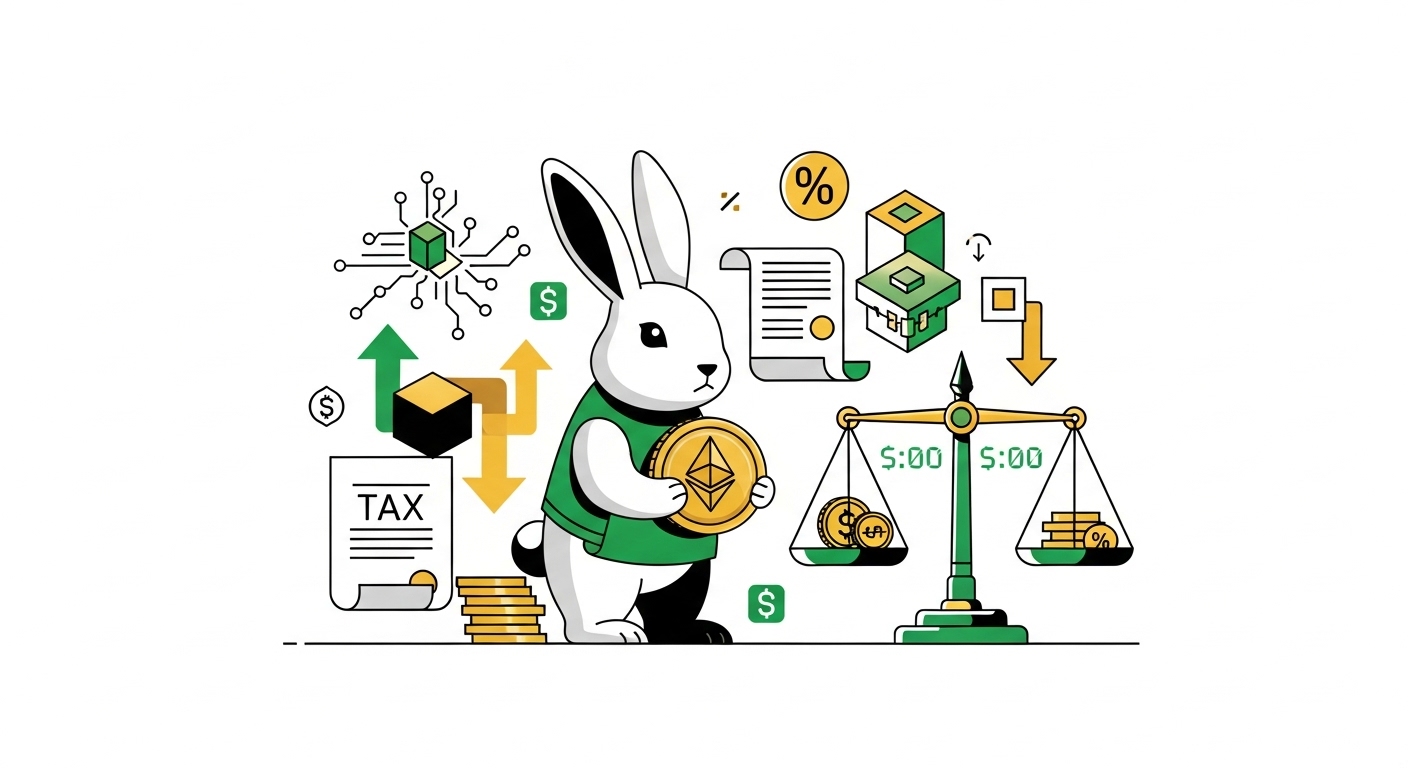The IRS treats cryptocurrency as property, which means many crypto transactions create taxable events affecting your capital gains tax.
Understanding how to avoid capital gains tax on cryptocurrency can help traders minimize liabilities and plan smarter.
Selling, trading, or even using crypto for purchases can trigger taxes, so understanding the rules is essential.
This article will share practical ways to lower or avoid capital gains tax legally, helping you keep more of your crypto profits without risking penalties.
You’ll learn about strategies like holding assets longer, tax-loss harvesting, and using retirement accounts.
These tactics follow IRS guidelines and keep your tax filing clean and straightforward. For more insights on trading and managing crypto successfully, see our How to Invest 100 Dollars in Cryptocurrency (Starter Guide).
Understand Taxable Events

Knowing when a cryptocurrency transaction creates a taxable event is the starting point to managing your capital gains tax.
Every time you move your crypto in a way that the IRS considers a sale or exchange, it can trigger a taxable event.
These events are where gains or losses need to be calculated and reported. Let’s break down the most common taxable actions in crypto and what you need to know about each.
Selling or Exchanging Crypto
Whenever you sell your cryptocurrency for cash or swap one coin for another, you have a taxable event.
Think of it like selling a stock or trade: the IRS treats this as selling property. You’re required to report each transaction by calculating the gain or loss based on the difference between what you paid (your cost basis) and what you received in the trade.
Even if you simply exchange Bitcoin for Ethereum, it counts as a sale. Each trade, no matter how small or frequent, must be reported separately on your tax return.
This means keeping clear records of every buy, trade, or sale is crucial for accurate tax filing and avoiding penalties.
Using Crypto to Pay for Goods
Paying for goods or services with your cryptocurrency is also a taxable event. When you use crypto instead of cash, the IRS views it as if you sold the crypto at its fair market value on the day of the transaction.
That means if your crypto has increased in value since you bought it, you’ll owe tax on the gain.
For example, if you bought Bitcoin for $5,000 and used it to pay for a $10,000 purchase, you must report the $5,000 gain.
This applies whether you’re buying a cup of coffee, a piece of art, or even paying rent with crypto. It’s easy to overlook because the payment feels like spending, but the tax rules treat it as selling.
Earned Crypto Income
If you earn cryptocurrency through mining, staking, airdrops, or as payment for services, this income isn’t just crypto; it’s taxable income.
The IRS taxes this as ordinary income, based on the fair market value at the time you receive it. This means it gets added to your regular income and taxed according to your income tax bracket.
Here are some examples of earned crypto income:
• Mining rewards: Earned by validating transactions and securing the blockchain network.
• Staking rewards: Received for locking up your assets to support network operations like consensus and validation.
• Airdrops: Free tokens distributed as part of promotions, community incentives, or new project launches.
• Crypto payments: Income received for offering services or freelancing, paid directly in cryptocurrency.
Tracking the value of your earned crypto can be tricky, but it is essential for reporting the correct income.
The tax file can get complicated if you mix earned income crypto with capital gains, so keeping transactions organized helps avoid surprises.
Understanding these taxable events will give you the foundation to make smart tax decisions on your cryptocurrency activities and confidently approach tax season.
Long-Term Holding Strategy

Holding your cryptocurrency for the long term is one of the smartest moves to manage capital gains tax.
By waiting to sell until you’ve held a coin for more than a year, you qualify for the lower long-term capital gains rates, which can be significantly less than short-term rates.
This approach isn’t just about saving on taxes; it’s also about giving your investments a chance to grow steadily without the pressure to sell quickly.
Timing Sales for the Tax Year
Careful timing plays a major role in lowering your tax bill. Planning your sales after you’ve held the asset for at least one year means you avoid those higher short-term gains taxed at ordinary income rates.
Additionally, selling near the end of the tax year can help you manage when your gains hit your taxable income.
For example, if you expect a lower income next year, waiting until January to sell might push your gains into a lower tax bracket.
If you sell in December, that income is added to your current year’s taxes, which might be higher.
Strategically planning your sales date helps spread your tax burden over multiple years and may reduce the overall tax rate you pay.
Avoid Frequent Trading
Every sale or trade triggers a taxable event, especially short-term trades that the IRS taxes as regular income.
Regular trading can quickly raise your taxable income and increase your tax rate. Limiting frequent sales and trades keeps your transactions simpler and reduces tax complexity.
Think of it this way: Constantly jumping in and out of positions creates a heavy tax load because each trade counts as a sale.
Holding your investments longer not only cuts down on taxes but also lowers the chance of mistakes or missed reporting.
Sticking to a long-term holding plan means fewer taxable events and a cleaner tax record.
Taking these steps helps keep your crypto profits safe from excessive taxation and supports a solid investment mindset.
Avoid letting short-term market moves dictate your decisions, especially when tax savings are on the line.
Tax-Loss Harvesting

Tax-loss harvesting is a smart way to reduce your capital gains tax by turning losses in your cryptocurrency portfolio to your advantage.
When some of your crypto assets have dropped below the price you paid for them, selling those assets can create a capital loss that offsets gains from other sales.
This strategy doesn’t erase your investment losses but can lower the amount of taxable capital gains for the year, meaning less tax paid overall.
The key is to carefully track all your transactions to spot these loss positions and know how to use the loss properly without violating IRS rules.
Using tax-loss harvesting can feel like turning a setback into a tax break, helping you keep more of what you earn even in a volatile market.
Identify Loss Positions
Start by reviewing your entire portfolio to find assets currently priced below their purchase cost.
This means tracking each transaction’s cost basis accurately, including fees and the original purchase price. Modern portfolio trackers or tax software can help here.
Look for coins or tokens where the market value has dropped since you bought them. These are your loss positions.
Selling these at a loss is where tax-loss harvesting begins. The loss you lock in by selling can cancel out your taxable gains from winning trades.
It’s like using a discount on one item to reduce your total shopping bill.
Stay organized and update your list often, especially after market swings or new buys. Without good tracking, you might miss out on opportunities to harvest those losses at tax time.
Rebuying After 31 Days
After selling an asset at a loss, you might want to get back in to avoid missing out on any future recovery.
The IRS has a rule called the “wash sale rule” that applies to stocks but currently does not explicitly apply to cryptocurrencies.
However, many tax professionals recommend waiting at least 31 days before repurchasing the same asset to keep the loss valid for tax deduction.
The point of waiting 31 days is to avoid being disqualified from taking that loss on your taxes. If you buy the same asset too soon, the IRS could treat it as if you never sold it, which means you lose the benefit of harvesting the loss.
In practice, waiting a month before rebuying the same crypto ensures your tax-loss harvesting stays legal and effective.
In the meantime, you might consider buying a similar but different asset if you want to remain invested in the market without breaking the rules.
This simple waiting period can be a small price to pay to reduce your tax bill significantly.
Tax-loss harvesting requires patience and planning, but it can be a valuable tool for managing your crypto taxes smarter and legally.
Charitable Donations of Crypto
Donating cryptocurrency to charity offers a smart way to avoid capital gains tax while supporting causes you care about.
When you give crypto directly to a qualified charity rather than selling it first, you usually don’t owe capital gains tax on the appreciated amount.
Plus, you may get a tax deduction based on the fair market value of the donation at the time. To make the most of this, it’s important to understand which charities qualify and how to report donations properly on your tax return.
Qualified Charities
Not every charity is eligible to receive cryptocurrency donations that qualify for tax benefits. Generally, the IRS recognizes donations to 501(c)(3) nonprofit organizations as deductible.
These include:
• Religious organizations
• Educational institutions
• Charitable foundations
• Scientific research groups
• Public service organizations
Before donating, you should verify the charity’s status. The IRS offers an online tool called the Tax Exempt Organization Search, which confirms if a charity is qualified.
Another quick check is reviewing the charity’s website or requesting a written statement confirming its tax-exempt status.
Avoid donations to individuals or groups that don’t meet the IRS criteria, as these won’t provide tax benefits and may complicate your tax situation.
Many well-known charities now accept crypto donations directly, but smaller nonprofits may only accept cash or checks.
Using a reputable crypto donation platform can also help ensure your gift reaches a qualified charity and provide a clear record of your donation.
Reporting Donations
Claiming a tax deduction for your cryptocurrency donation starts with accurate reporting. Donations of property, including crypto, require detailing on your tax return.
You’ll typically use Schedule A to itemize your deductions.
Here’s what to include:
• The fair market value of the donated cryptocurrency on the date you gave it
• The charity’s name and confirmation of the gift
• If the donation exceeds $500, details about the property (such as type and amount) must be reported on Form 8283
• For donations over $5,000, you might need a qualified appraisal of the crypto’s value to support your deduction
Maintaining thorough records is essential. Keep transaction confirmations, receipts from the charity, and any statements related to your donation.
This documentation will back up your claim if the IRS asks for proof.
Donating crypto directly to qualified charitable organizations is an efficient way to reduce capital gains tax while contributing to causes you believe in.
When done right, it offers a straightforward tax benefit alongside the satisfaction of giving.
Use Tax-Advantaged Accounts
Using tax-advantaged accounts offers a clever way to reduce or avoid capital gains tax on your cryptocurrency investments.
These accounts shield your gains from immediate taxation, allowing your crypto to grow without frequent tax consequences.
Among these, Self-Directed IRAs designed to hold crypto have become popular options for investors who want both tax savings and control over their digital assets.
For more details on tax matters, check out Best Crypto Tax Software (Top Tools to Simplify Your Taxes).
Self-Directed IRA Basics
A Self-Directed IRA (Individual Retirement Account) lets you include alternative investments like cryptocurrency inside a tax-deferred or tax-free retirement account.
Opening one usually requires working with a custodian that supports crypto assets.
Here are the essentials:
• Eligibility: Anyone with earned income can contribute to an IRA
• Contribution Limits: For 2024, you can add up to $7,000 annually if you’re 50 or older; otherwise, $6,500
• Types: Traditional IRAs offer tax deferral on gains until withdrawal, while Roth IRAs let gains grow tax-free if certain conditions are met
• Crypto-friendly Custodians: These firms handle storing and valuing cryptocurrencies within your IRA
By placing your crypto in a Self-Directed IRA, you can avoid paying capital gains tax each time you trade or sell inside the account.
Taxes are only due when you withdraw funds in the future, and Roth IRAs may avoid taxes altogether on qualified distributions.
Potential Risks and Compliance
While tax advantages are appealing, it’s important to be aware of risks and strict compliance rules.
Some points to consider:
• Custodial Risks: You don’t directly control the assets inside the IRA. If the custodian mishandles your account or suffers security breaches, your holdings could be at risk
• Valuation Requirements: IRS rules require annual valuations of your crypto assets inside the IRA. This can be tricky, given crypto price swings, and may require professional appraisals
• IRS Reporting: You must follow specific IRS guidelines for reporting contributions, distributions, and valuations. Failing to comply can trigger penalties or the disqualification of the tax benefits
• Prohibited Transactions: Certain transactions, like borrowing from your IRA or self-dealing, are forbidden and can cause tax penalties.
Using a Self-Directed IRA for crypto works best when you partner with an experienced custodian and maintain detailed records.
It’s wise to consult a tax professional to ensure you meet all reporting requirements and avoid costly mistakes.
Check out this article about IRA, via, Cryptocurrency IRA Account Complete Guide.
Employing tax-advantaged accounts like these provides a solid strategy for legally growing your crypto portfolio without losing gains to capital gains taxes year after year. You can combine this approach with other strategies to optimize your overall tax situation.
Conclusion
Knowing which crypto transactions trigger capital gains tax is the first step toward smart tax planning.
Combining long-term holding with tax-loss harvesting, making charitable donations with crypto, and using tax-advantaged retirement accounts can all help reduce or avoid capital gains tax legally.
Always keep detailed records of your purchases, sales, donations, and income to make tax time smoother and more accurate.
Consulting a tax professional is a wise move to ensure you follow the rules correctly and maximize your tax benefits.
For more practical insights on crypto trading and tax strategies, you might find additional resources on CFD vs stock trading explained useful to expand your investment knowledge.

Adeyemi Adetilewa is a digital marketing strategist and writer with over a decade of experience helping B2B, SaaS, Web3, and eCommerce brands grow through data-driven marketing. Adeyemi empowers professionals and business owners with actionable insights, growth strategies, and digital tools for success.

